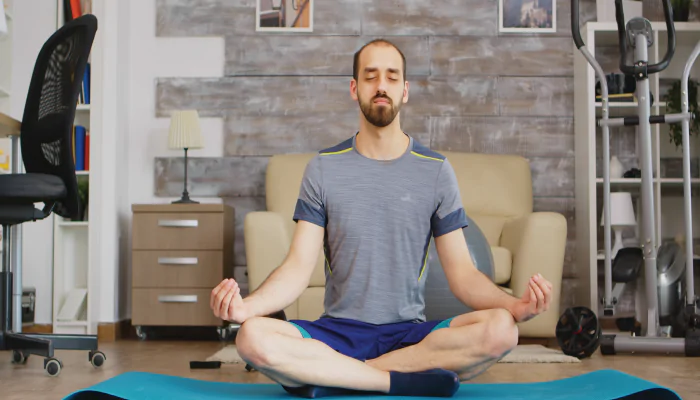If you’re a studio owner or someone who practices meditation in a dedicated space, the atmosphere of your meditation room plays a significant role in enhancing your experience. In this article, we’ll explore ten thoughtful and well-researched meditation room decoration ideas that cover everything from color choices to object placement, ensuring your space nurtures calmness and clarity. If your budget is limited check out: the 5 Best Meditation Room Decoration ideas on the budget.
Table of Contents
Soft, Neutral Colors for a Calming Atmosphere
Choosing the right color palette is the foundation of a serene meditation room. Soft, neutral colors such as muted blues, and pale greens, and earthy tones like beige or taupe create a calm and peaceful environment. These colors are known to soothe the mind and evoke a sense of tranquility, helping to quiet the mental chatter that often arises during meditation.
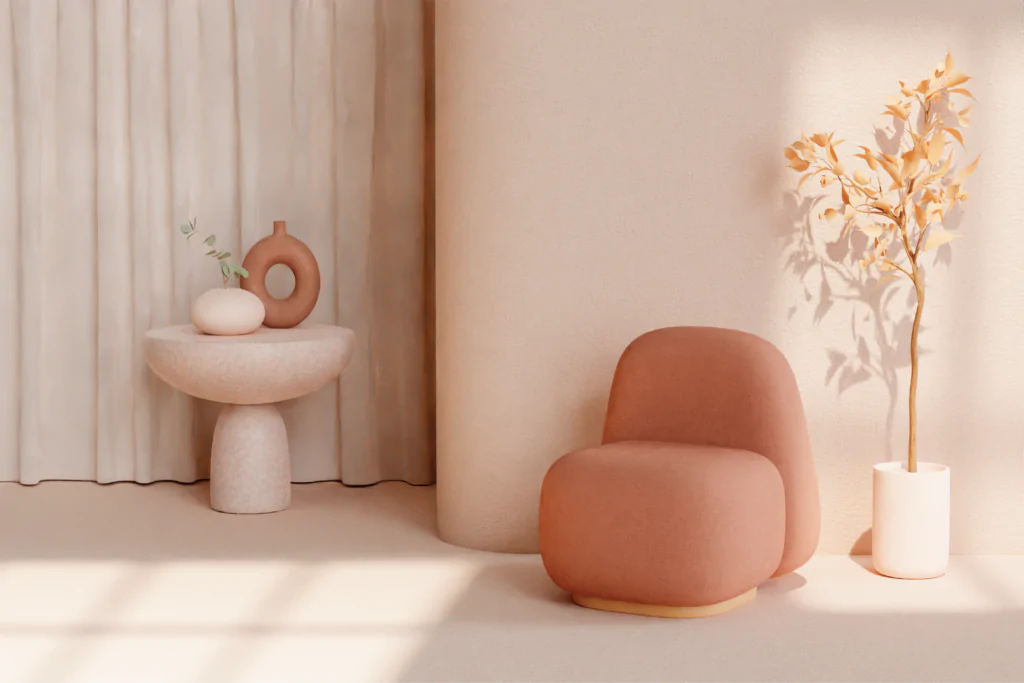
To complement these colors, opt for meditation mats or blocks in cream, light gray, or pastel shades. The subtle combination of neutral walls and soft-colored meditation accessories will blend harmoniously, enhancing the space’s calming ambiance.
Embrace Natural Light to Elevate Mood
Natural light is another essential element of a well-decorated meditation room. It helps maintain a fresh, airy environment, positively impacting mood and energy levels. Position your meditation space near a window to allow sunlight to filter in, creating a warm and inviting glow. Exposure to natural light has been shown to improve mental clarity, which is particularly beneficial during meditation.

To enhance this effect, use light, sheer curtains in soft whites or creams to diffuse the light and keep it gentle on the eyes. Pairing the natural lighting with a mat in earthy tones will create a balanced, grounding feel in your room.
Choose Comfortable and Supportive Seating
Comfort is critical when it comes to meditation. Low seating options, such as floor cushions, zafus, or yoga bolsters, are ideal for maintaining proper posture during long sessions. Choose cushions that are not only functional but also contribute to the aesthetic of your space. Soft fabrics in natural materials like cotton or linen in earthy shades will tie in beautifully with your room’s overall decor.
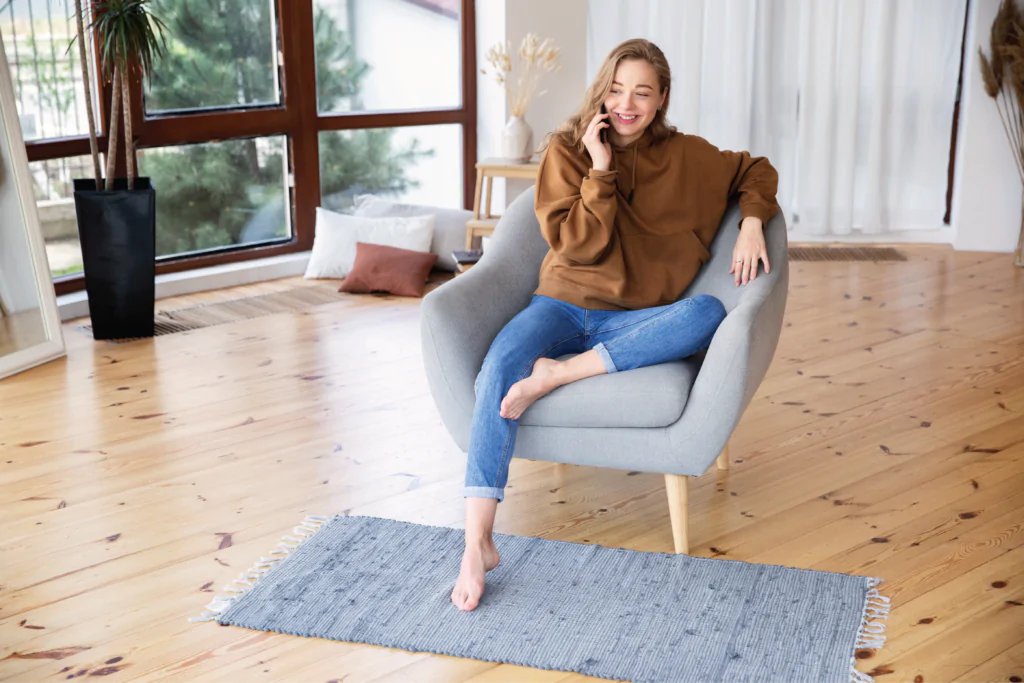
You can opt for meditation cushions in tones like soft lavender or muted greens. These cushions will blend with neutral wall colors while adding a subtle splash of personality to the room.
Incorporate Essential Oils for a Multisensory Experience
Scent plays a decisive role in relaxation and focus. Including an essential oil diffuser in your meditation room can significantly deepen your meditation experience. Scents like lavender, sandalwood, and frankincense are popular due to their calming and grounding properties. Position the diffuser in a central spot in the room to allow the soothing fragrance to spread evenly.

In terms of decor, choose a diffuser that complements the room’s design—perhaps a ceramic or wooden diffuser to maintain a natural look. The scent and soft surroundings will make your space feel complete.
Add Greenery for a Connection to Nature
Plants are an easy and effective way to bring nature indoors, creating a fresh, oxygenated environment ideal for meditation. Greenery promotes relaxation and adds an organic element to the space, which can help ground your energy. Consider low-maintenance plants like peace lilies, snake plants, or ferns that thrive indoors and require minimal care.
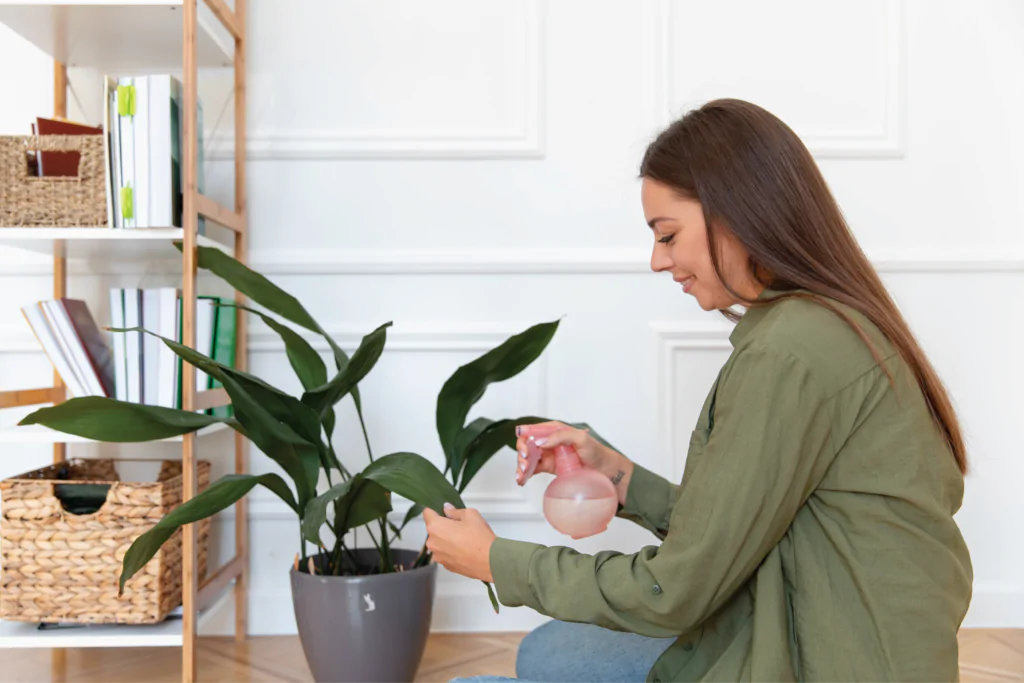
Place your plants in ceramic or clay pots that match your room’s aesthetic. The plants’ natural green works exceptionally well when paired with meditation accessories in natural, earthy tones.
Use Wall Art to Set a Spiritual Tone
Artwork is a great way to personalize your meditation space. Choose pieces that evoke peace, spirituality, or introspection. Mandalas, zen landscapes, or abstract art in soothing tones can create a calming backdrop for meditation. Wall hangings in fabric or canvas prints are also beautiful options for adding a touch of texture to your walls.
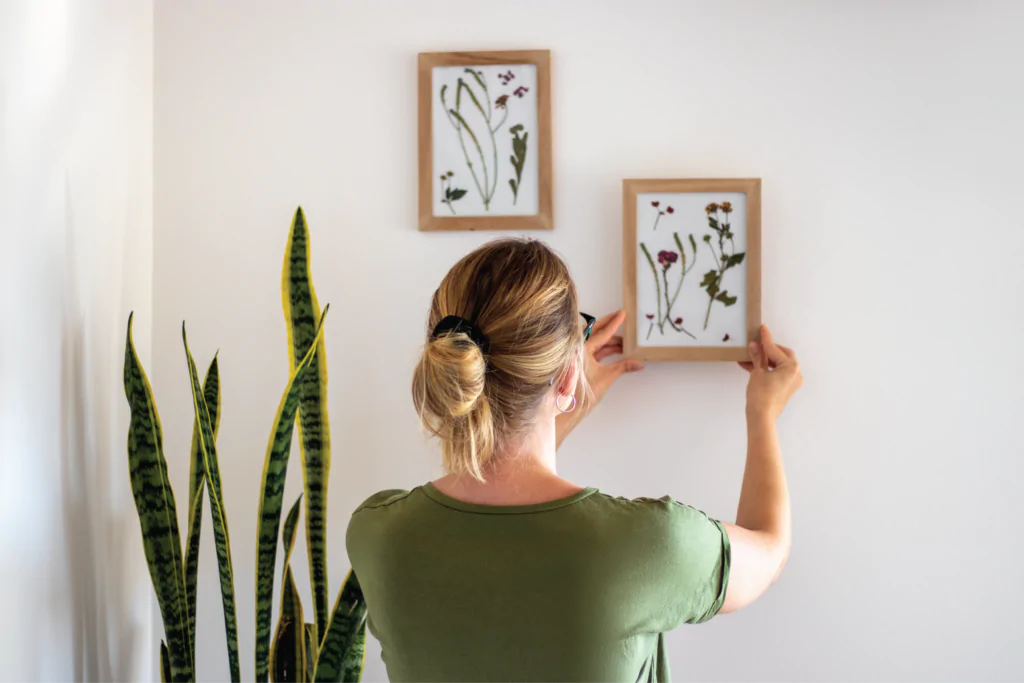
Select one or two key pieces that harmonize with your space’s colors to avoid visual clutter. Soft blues, greens, or gold accents in your artwork can complement neutral-colored seating or mats.
Light Candles for a Warm, Inviting Glow
Candles are often associated with meditation because they can create a warm, comforting atmosphere. Opt for unscented or lightly scented candles in neutral shades like white or beige. Group several candles of varying sizes together to create a focal point, and place them strategically around the room to enhance the ambiance without overwhelming the space.
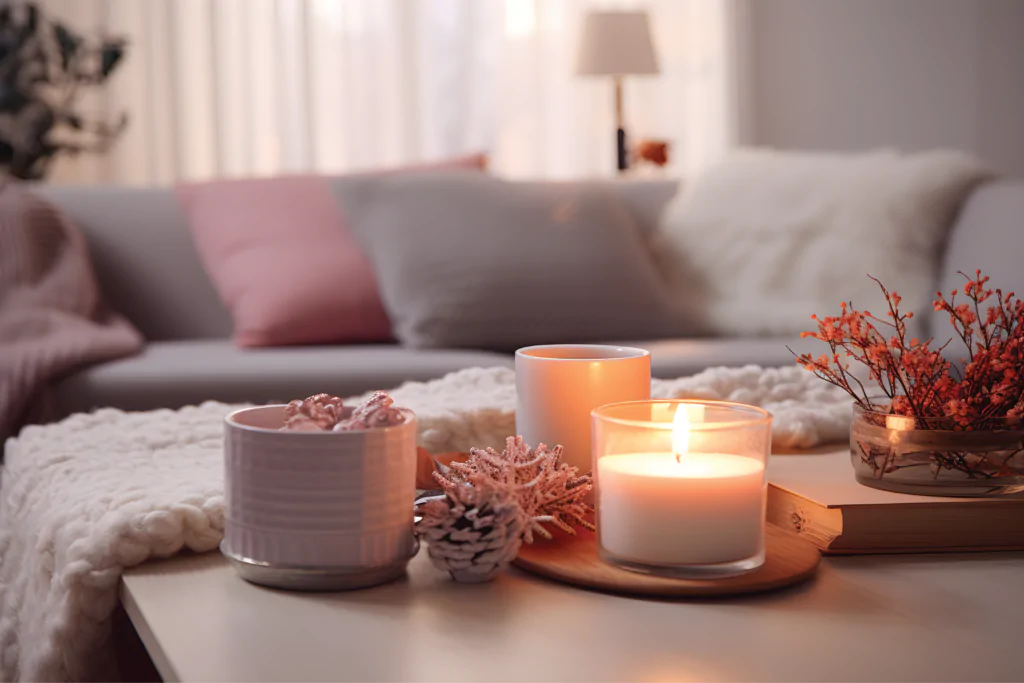
The flickering light from the candles adds a dynamic element to your room, balancing out the stillness of your meditation practice. Pair this gentle lighting with meditation blocks or mats in natural tones to create a peaceful contrast.
Introduce Crystals for Positive Energy Flow
Crystals are often used in meditation spaces to foster positive energy and healing. Stones like amethyst rose and clear quartz can help raise the room’s vibration and support your spiritual practice. You can place them on a small altar, shelf, or meditation cushion.

To ensure balance and harmony in the space, opt for crystal holders or trays that complement your room’s decor—wooden trays or natural stone coasters work particularly well. The crystals’ colors blend beautifully with soft, neutral-colored accessories.
Add Sound Elements for a Calming Experience
Including gentle sound elements in your meditation room can help create an even more immersive experience. A small water fountain or wind chimes can introduce natural, soothing sounds that enhance relaxation and mindfulness. The gentle trickling of water or soft chimes can guide your focus and elevate the calming energy in the room.
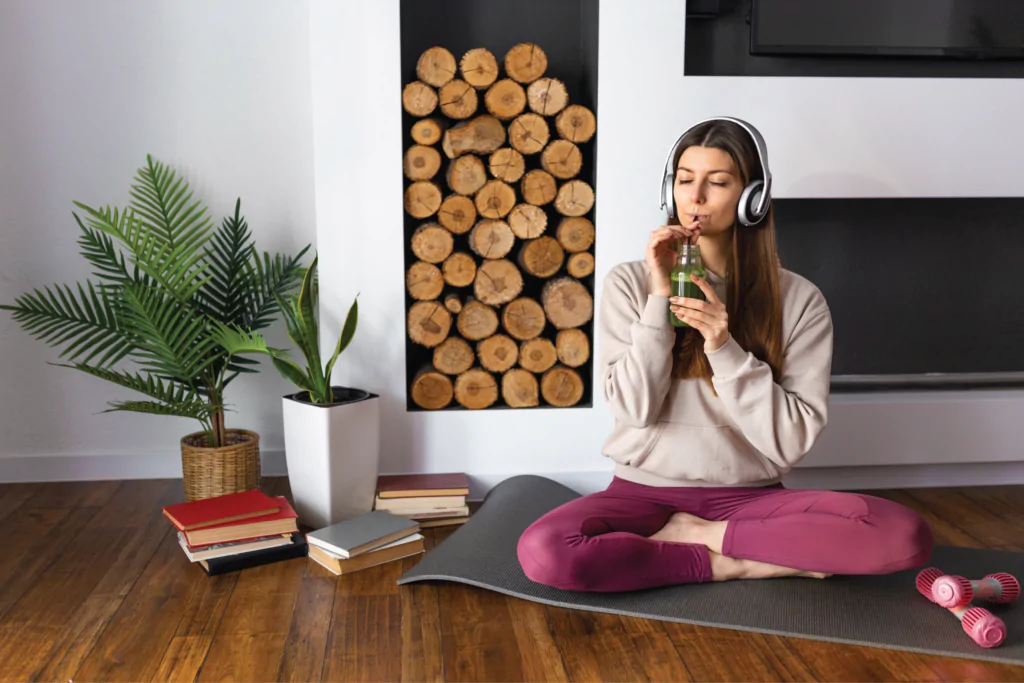
Position these elements near a window or quiet corner, where they can subtly fill the space without overpowering. Pairing the sound of the fountain with light-colored meditation mats or cushions will create a tranquil and balanced space.
Keep the Space Minimal and Clutter-Free
The final key to decorating your meditation room is to keep it minimal. Clutter can distract the mind and disrupt the room’s energy flow. Choose only the essential objects that align with your practice and keep the space organized and intentional.
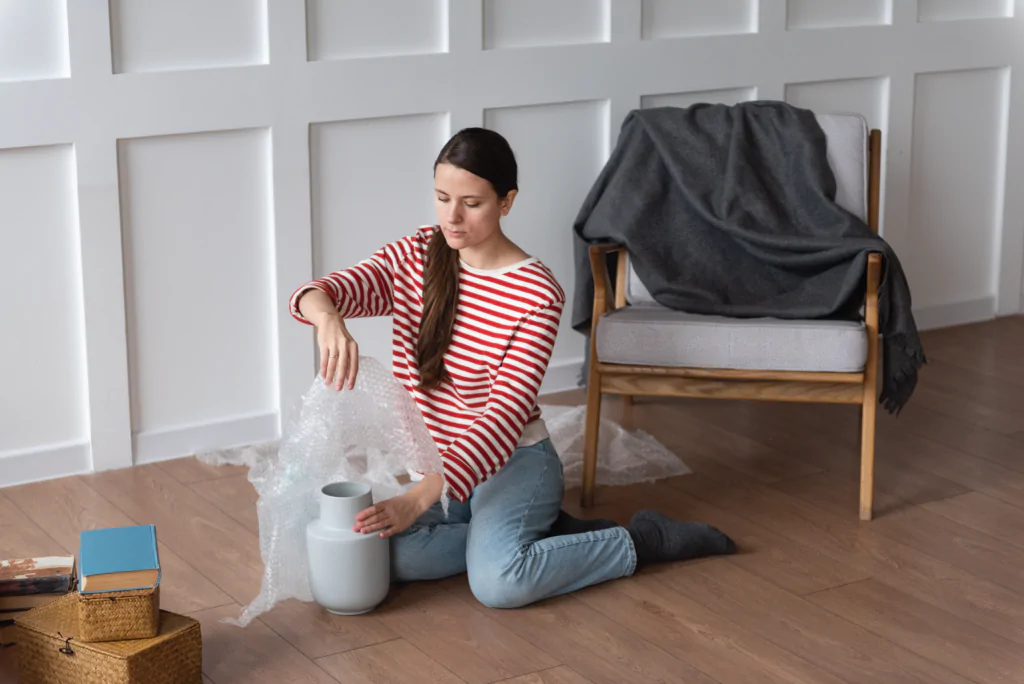
To maintain this simplicity, consider hidden storage options like woven baskets or decorative boxes. Using neutral-toned furniture or accessories will ensure your room remains visually uncluttered and peaceful.
Conclusion
Designing a meditation room decoration that balances aesthetics and functionality is critical to creating a space to immerse yourself fully in your practice. From choosing soothing color palettes and natural light to incorporating calming elements like plants, crystals, and gentle sounds, each aspect of the room contributes to the overall atmosphere of tranquility. Keeping the space minimal and well-organized ensures that your environment promotes focus and inner peace. Whether you’re a studio owner or setting up a personal space at home, these thoughtful decoration ideas will help transform any room into a calming sanctuary for meditation.

